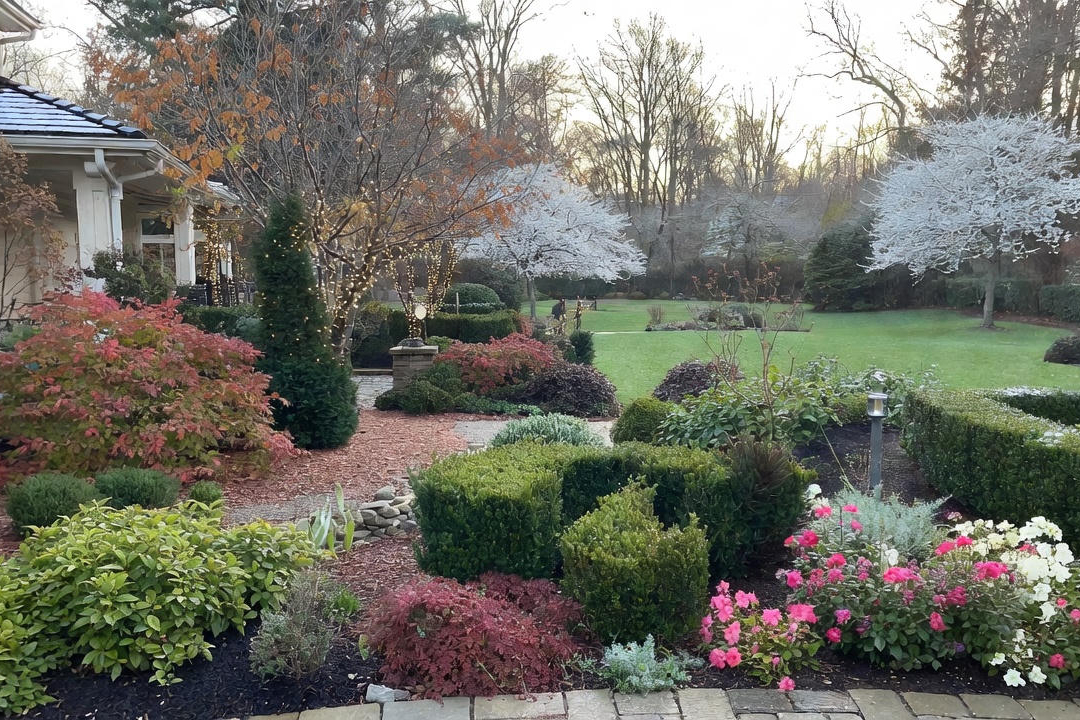
Rosemary (Rosemarinus officinalis) is a woody perennial shrub that is a workhorse in the landscape. This evergreen is everything you want in a foundation plant including handsome, fragrant, hardy, and drought-tolerant. Versatile rosemary brings fresh fragrance to the yard with its short, deep-green, aromatic leaves. The small blossoms attract a wide variety of pollinators to the yard and garden.

Plant Profile
Rosemary comes in two types: upright and trailing (some of them more like creeping). It’s an excellent choice for perennial beds, walkways, and large pots. The trailing varieties are particularly eye-catching and perfect for cascading over the top of walls or pots. With a little research, you’ll find that there are differences among them. Some drape or creep immediately, while others begin growing upward before they arch gracefully downward.
Zones: 7-10
Sun/Shade: Full sun (6-8 hours) to part shade
Height: 4-6 feet depending on variety
Width: 6-8 feet
Bloom Time: Early spring and again in early summer.
Bloom Color: Flowers may be blue, purple, pink, or white.
Wildlife: Bees, butterflies, hummingbirds

Cultivation
Rosemary is difficult to start from seed, so plants are usually purchased as “starts” (small, young plants), or cuttings are often taken from a larger, more mature plant. They live their best lives in loamy soil that is slightly on the acidic side. That said, like most herbs, it’s very forgiving and adjusts to a variety of soils.
When you remove a start from its container, plant rosemary even with (or slightly higher) than the soil line in the container. Keep plants slightly damp without overwatering. Rosemary is drought tolerant, but it needs time to acclimate to its new surroundings. Let them become established in their new bed before letting them dry out between waterings. When planting them in containers, a pot that offers roots some wiggle-room is best. A light potting soil (cactus mix is nice) and good drainage holes are key here.

Varieties
The right rosemary can make all the difference in your landscape or on the front porch. Keep an eye out for these varieties:
- Common rosemary – Widely available and has an upright growing habit. Great flavor as a kitchen herb.
- 'Tuscan Blue' – Has a lemony scent and flavor with an upright habit.
- 'Prostratus' – Its trailing habit is eye-catching in pots or hanging baskets.
- 'Mrs. Howard's' – Has a unique trailing habit of twining and curving like no other rosemary plant.
- 'Severn Sea' – Has a trailing habit and is cold hardy (zone 6).
- ‘Athens Blue Spire’ – Has an upright habit and is highly aromatic. Great for a cooler zone 6 climate.
- ‘Joyce de Baggio’ (Golden rosemary) – Has an upright habit with leaves that change color through the seasons. Golden rosemary’s leaves are bright yellow in early spring becoming dark green in the summer months.
Special Features
Far from being a one-trick-pony, rosemary pulls double-duty as a culinary herb in the kitchen. Snip 1/3 of a branch to use in the kitchen to season dinners, salts, butters, jellies, oils, and vinegars. If you enjoy natural beauty aids, add it to sugar scrubs or hair rinses. Long rosemary stems offer a unique piney-fresh scent to floral bouquets. Rosemary is the perennial that keeps on giving.
Download iScape now and create landscape designs that improve curb appeal and transform gardens. iScape it!




.jpg)

.jpg)